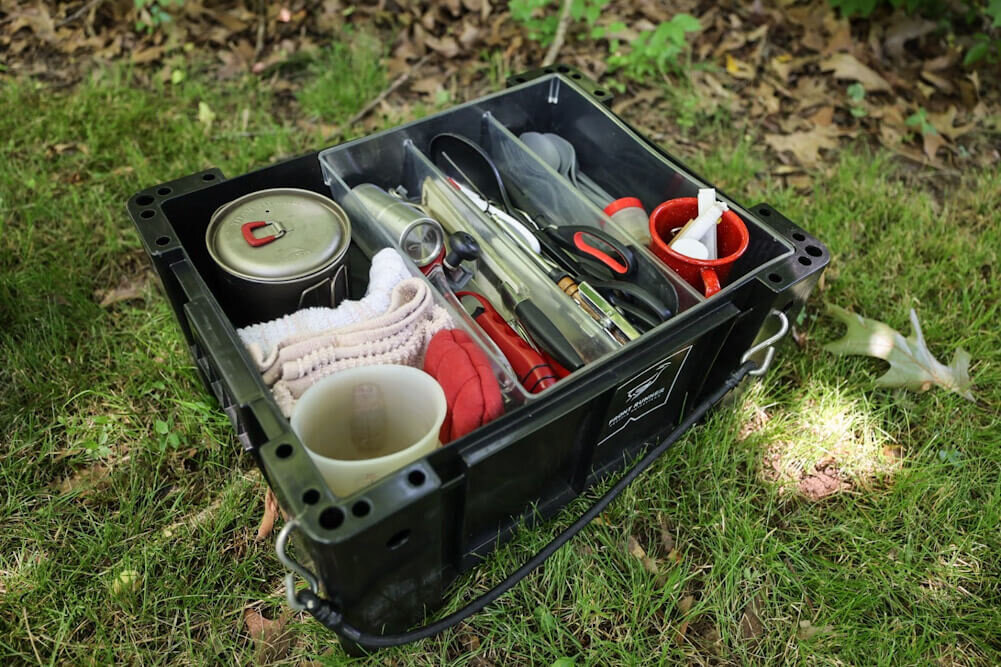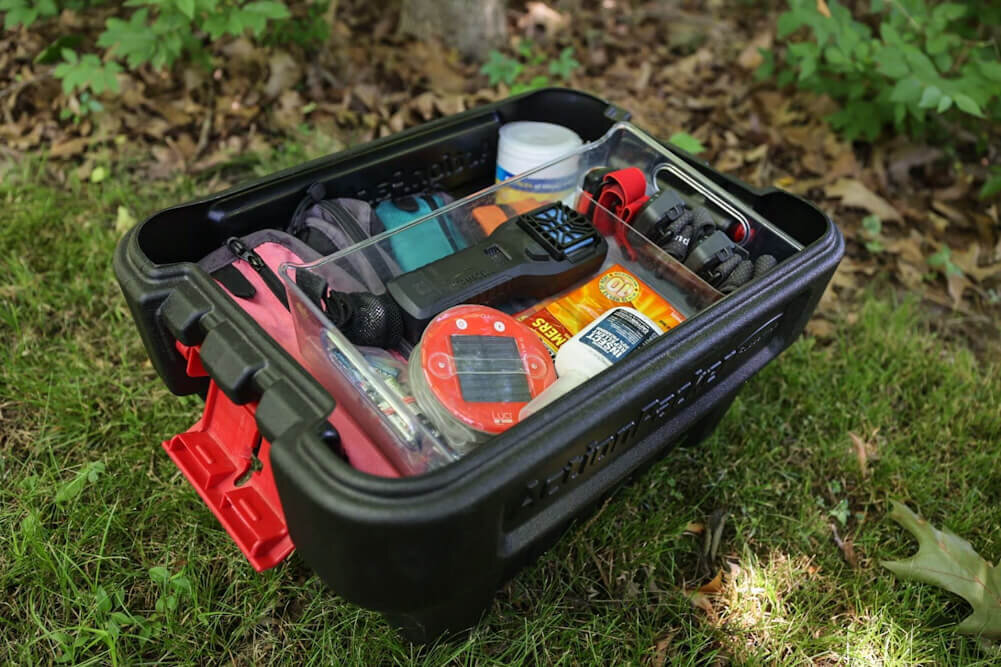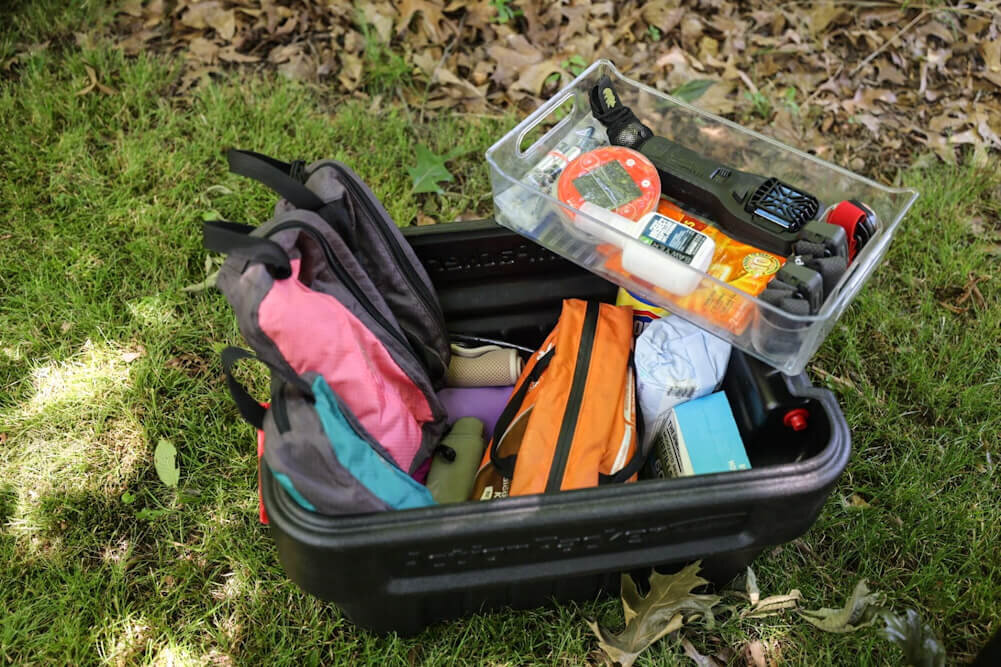Storage ideas for camping gear
 When it comes to camping, having a well-organized storage system for your gear is essential. Not only does it make packing and unpacking a breeze, but it also ensures that your equipment stays in good condition and is easily accessible when you need it. In this article, I will share some practical storage ideas for camping gear that will help you keep everything in order and make your outdoor adventures even more enjoyable.
When it comes to camping, having a well-organized storage system for your gear is essential. Not only does it make packing and unpacking a breeze, but it also ensures that your equipment stays in good condition and is easily accessible when you need it. In this article, I will share some practical storage ideas for camping gear that will help you keep everything in order and make your outdoor adventures even more enjoyable.
Organizing your camping gear
Before we dive into specific storage solutions, let’s talk about the importance of organizing your camping gear. By categorizing and grouping similar items together, you can easily locate what you need without rummaging through a jumbled mess. Start by creating separate piles for cooking equipment, sleeping gear, clothing, and other essentials. This initial step will set the foundation for an efficient storage system.
Once you have sorted your gear, consider using clear plastic bins or storage bags to keep everything organized. These containers allow you to see the contents at a glance, making it easier to find what you need without having to open multiple boxes. Label each container with its contents to further streamline the process.
Choosing the right storage containers
When it comes to selecting storage containers for your camping gear, durability and functionality are key. Look for containers that are made from sturdy materials and have secure lids to protect your gear from dust, moisture, and pests. Opt for stackable containers to maximize space and make the most of your storage area.
Consider investing in specialized camping gear storage containers that are designed to accommodate specific items such as sleeping bags, tents, and cookware. These containers often come with built-in dividers or compartments, allowing you to keep everything neatly organized and easily accessible.
Utilizing space-saving techniques
Space is often limited when camping, so it’s important to make the most of every inch. Here are some space-saving techniques to help you optimize your storage:
- Roll your clothes instead of folding them to save space in your backpack or storage containers.
- Use vacuum-sealed bags to compress bulky items like sleeping bags and jackets.
- Utilize the empty spaces inside your camping gear, such as stuffing socks or small items inside your shoes.
- Invest in collapsible storage bins or bags that can be easily folded and stored when not in use.
Storing camping gear in your vehicle
Roof racks and cargo boxes
If you’re traveling to your camping destination by car, utilizing roof racks and cargo boxes can significantly increase your storage capacity. Roof racks provide a convenient way to transport larger items such as tents, kayaks, or bicycles, while cargo boxes offer a secure and weather-resistant storage solution for smaller gear.
When using roof racks or cargo boxes, make sure to distribute the weight evenly and secure everything tightly to prevent shifting during transit. Additionally, consider investing in lockable options to protect your gear from theft.
Trunk organizers
For smaller camping gear that you want to keep within easy reach, trunk organizers are a great solution. These collapsible storage compartments fit neatly in your vehicle’s trunk and allow you to separate and organize items such as cooking utensils, first aid kits, and camping accessories.
Look for trunk organizers with multiple compartments and pockets to keep everything in its place. Some organizers even come with removable insulated coolers, perfect for storing perishable food items during your camping trip.
Utilizing the space under seats
Don’t overlook the often underutilized space under your vehicle’s seats. This area can be a great spot to store smaller items that you want to keep easily accessible. Consider using storage bags or small containers to keep items like flashlights, batteries, and maps within reach.
Remember to secure these items properly to prevent them from sliding around while driving. You can use bungee cords or Velcro straps to keep everything in place.
Storing camping gear at home

Investing in storage shelves or cabinets
When it comes to storing your camping gear at home, investing in storage shelves or cabinets can make a world of difference. These sturdy and versatile storage solutions allow you to keep your gear organized and easily accessible.
Consider installing adjustable shelves to accommodate items of different sizes. This way, you can customize the storage space to fit your specific needs. If you have limited floor space, wall-mounted shelves are a great option to maximize vertical storage.
Using clear plastic bins for easy identification
Clear plastic bins are a fantastic storage option for camping gear at home. Not only do they provide protection from dust and moisture, but they also allow you to quickly identify the contents without having to open each container.
Label each bin with its contents and stack them neatly to save space. To further enhance organization, consider using different colored bins for different categories of gear. For example, use blue bins for cooking equipment and green bins for sleeping gear.
Utilizing wall space with hooks or pegboards
Make the most of your wall space by installing hooks or pegboards to hang camping gear such as lanterns, backpacks, and cooking utensils. This not only keeps your gear off the floor but also makes it easily accessible and visually appealing.
Arrange your gear in a way that makes sense to you, whether it’s by size, frequency of use, or category. This will help you maintain a clutter-free and organized storage area.
Protecting camping gear from moisture and pests

Using waterproof bags or containers
Moisture can be a camping gear’s worst enemy, causing mold, mildew, and damage. To protect your gear from moisture, invest in waterproof bags or containers. These will keep your items dry even in wet conditions.
When packing your gear, place items that are susceptible to water damage, such as clothing and sleeping bags, in waterproof bags. For larger gear like tents and tarps, use waterproof containers with secure lids to ensure maximum protection.
Adding moisture-absorbing packets
In addition to using waterproof bags and containers, consider adding moisture-absorbing packets to your storage containers. These packets, often filled with silica gel, help absorb excess moisture and prevent the growth of mold and mildew.
Place a few packets in each container, especially those containing clothing or other moisture-sensitive items. Remember to replace the packets regularly to maintain their effectiveness.
Using pest repellents or traps
Pests such as mice, ants, and spiders can wreak havoc on your camping gear. To keep them at bay, use pest repellents or traps in your storage area.
There are various natural repellents available, such as peppermint oil or cedar chips, that can deter pests without the use of harmful chemicals. Place these repellents strategically around your storage area to create a barrier against unwanted visitors.
Keeping camping gear organized on the campsite

Using hanging organizers
Hanging organizers are a fantastic way to keep your camping gear organized and easily accessible on the campsite. These organizers typically have multiple pockets and compartments, allowing you to store items such as toiletries, cooking utensils, and small tools.
Hang the organizer from a tree branch or a nearby pole to keep everything within arm’s reach. This not only saves space but also keeps your gear off the ground, reducing the risk of damage or loss.
Utilizing collapsible storage bins
Collapsible storage bins are a versatile storage solution for the campsite. These lightweight and foldable bins can be easily packed and assembled when needed, providing a convenient way to store and transport your gear.
Use collapsible storage bins to keep items like firewood, cooking supplies, and outdoor games organized. When not in use, simply fold them flat and store them in your vehicle or camping gear storage area.
Creating designated storage areas
Creating designated storage areas at your campsite can help keep your gear organized and prevent it from getting mixed up with others. Use tarps or ground cloths to define specific areas for different categories of gear, such as cooking, sleeping, and recreational equipment.
Label each area with signs or markers to ensure that everyone knows where to find and return items. This will not only save time but also minimize the chances of misplacing or losing gear.
Conclusion on storage ideas for camping gear
Having a well-organized storage system for your camping gear is essential for a stress-free and enjoyable outdoor experience.
By following the storage ideas and techniques outlined in this article, you can keep your gear in order, protect it from moisture and pests, and easily locate what you need when you need it.
So, whether you’re storing your gear at home or organizing it on the campsite, remember to prioritize organization and invest in the right storage solutions. Happy camping!
FAQs on storage ideas for camping gear
How do you store your camping gear?
1. Make Use of Overhead Space. 2. Store Tents Properly. 3. Stack Tarps First. 4. Organize with Bins and Drawers. 5. Store Dangerous Items Up High. 6. Hang Hiking Packs on Hooks. 7. Store Gear Inside Backpacks. 8. Keep Sleeping Gear Together.
Where do people store camping gear?
A dry storage location is always ideal for camping gear. Garages may have more room, but they can be damp so storing inside your home in a basement, closet, crawl space or even attic may be more ideal. Basements can also be damp, so, if possible, using a dehumidifier will help keep your camping gear in good standing.
How do you store camping gear in a small apartment?
1. Identify and Create a Dedicated Storage Space. You have to get creative when creating gear storage space out of thin air. 2. Make Your Gear Your Decor. 3. Get Creative with Dead Space. 4. Bins, Bins, Bins. 5. Separate Gear Storage by Activity. 6. Use Gear to Store Gear. 7. Keep It Fresh!
How do you organize outdoor gear?
1. De-Grime Your Gear. 2. Stop, Drop, categorize. 3. Cull it. 4. Find the right space to store your gear. 5. Clean your storage space. 6. Get the right containers for your space. 7. Put a label on it. 8. Think vertical.
Originally posted 2023-10-31 02:55:16.

